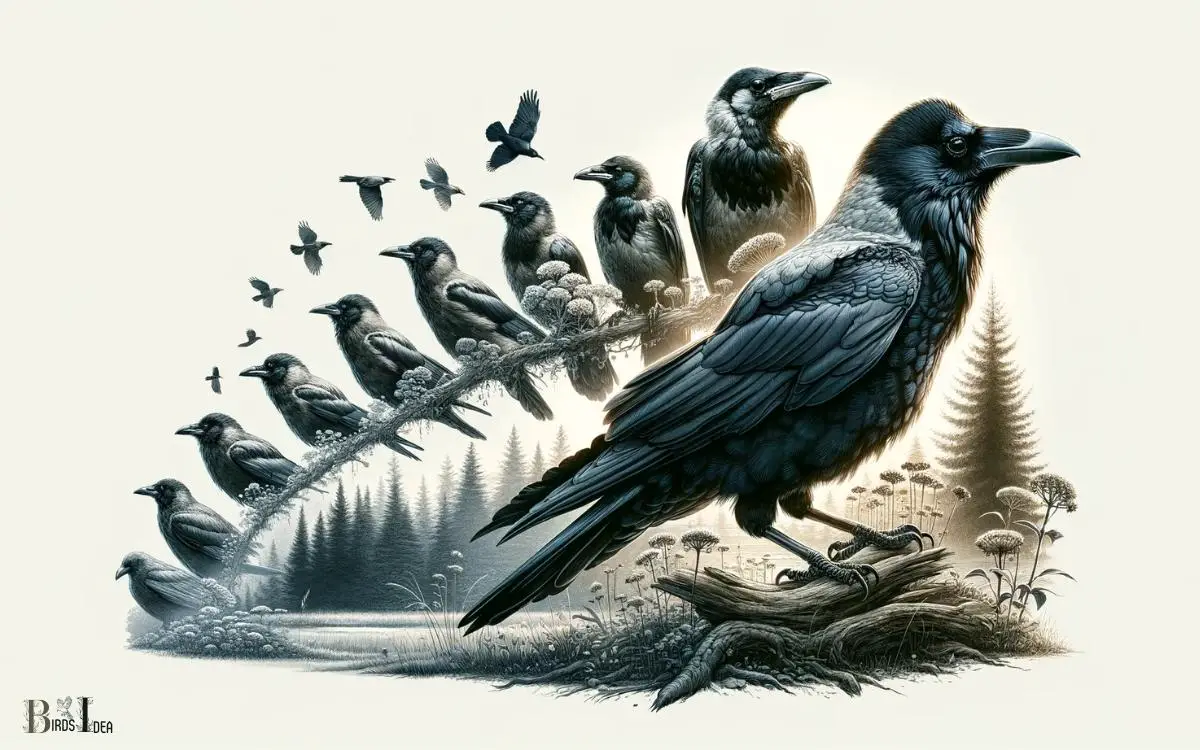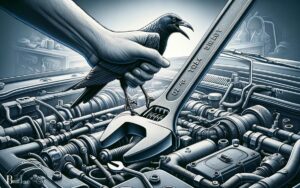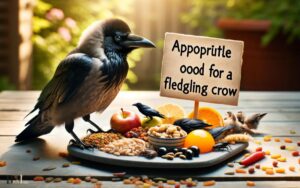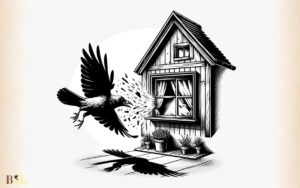What is the Lifespan of a Crow? Typically Around 7-8 Years!
The average lifespan of a crow in the wild is typically around 7-8 years; however, they have the potential to live much longer, with some individuals reaching 20 years or more in captivity.
Various factors such as diet, predation, human interaction, and environmental conditions play a role in their longevity.
Crows are highly adaptable birds with several factors affecting their lifespan:
For example, crows in urban areas may have access to more consistent food sources, but also face greater risks from vehicles and pollutants.
Understanding the lifespan of crows enhances our knowledge of avian biology and helps in the conservation efforts of these remarkably intelligent creatures.

Key Takeaway
Anatomy and Physiology
Crows typically have a lifespan ranging from 7 to 8 years in the wild, and understanding their anatomy and physiology can provide insight into their longevity.
Crows are highly intelligent birds with a sleek black plumage, a sturdy beak, and keen eyesight.
Their respiratory system is well-adapted for efficient oxygen exchange, enabling them to thrive in various environments.
Crows also possess remarkable cognitive abilities, with a large brain relative to their body size.
Their diet, consisting of a wide variety of foods, supports their energy needs, while their muscular system allows for agile flight and complex behaviors.
Additionally, their reproductive system is finely tuned, with strong instincts for nest-building and rearing their young.
By studying the intricate interplay of these anatomical and physiological features, researchers can gain valuable insights into the factors influencing crow longevity in the wild.
Environmental Factors
The lifespan of a crow is significantly influenced by environmental factors. These include habitat, food sources, and predation.
The habitat in which crows live can impact their lifespan. Urban and suburban environments often provide more consistent food sources and fewer predators compared to rural or wild habitats.
Additionally, the availability of food sources and the ability to avoid predation play crucial roles in determining the crow’s survival and overall lifespan.
Habitat Impact on Lifespan
Nesting in urban areas, crows often face shorter lifespans due to increased exposure to pollution and human-related hazards.
The table below outlines the environmental factors impacting crow lifespans:
| Environmental Factor | Impact on Lifespan |
|---|---|
| Pollution | Shortened lifespan due to respiratory issues and toxicity from contaminated food and water sources. |
| Habitat destruction | Reduced nesting sites and food sources, leading to increased competition and vulnerability to predation. |
| Human interference | Increased risk of collisions with vehicles, power lines, and human-induced injuries. |
| Food availability | Limited access to natural food sources, leading to malnutrition and reduced survival rates. |
| Climate change | Disruption of natural foraging and migration patterns, impacting overall health and reproductive success. |
These factors significantly influence crow populations in urban environments, highlighting the importance of conservation efforts and sustainable urban planning for wildlife preservation.
Food Source Influence
In urban areas, the availability of food sources significantly impacts the lifespan of crows. Urban environments offer a diverse array of food sources for crows, including human refuse, insects, small mammals, and even pet food.
These readily available food sources can contribute to increased survival rates and overall lifespan for urban crow populations.
However, the quality and abundance of these food sources can vary widely, impacting the health and longevity of individual crows.
Additionally, urban areas may also pose risks such as exposure to pollutants and toxins from human activities, which can adversely affect the health and lifespan of crows.
Understanding the dynamics of food availability and its influence on crow populations is crucial for assessing their overall survival and population trends.
This interplay between food availability and crow populations leads to the subsequent consideration of predation and survival.
Predation and Threats
Predation and threats play a significant role in the lifespan of crows. Natural predators such as hawks, owls, and raccoons pose a constant threat to the survival of crows.
Additionally, human-related factors such as habitat loss and collisions with vehicles also impact the overall lifespan of crows.
Crow Predators and Risks
Crow populations face various threats from natural predators and human activities. Natural predators such as large birds of prey, including eagles, hawks, and owls, pose a significant risk to crows, especially nestlings and fledglings.
Mammals such as raccoons, foxes, and domestic cats are known to prey on crows and their eggs.
Human activities also contribute to the mortality of crows. Habitat destruction, pollution, and vehicle collisions all play a role in their decline.
Pesticides and poisoning, whether intentional or unintentional, further jeopardize crow populations.
Climate change presents additional risks, affecting food availability and nesting sites for crows.
These combined factors present substantial challenges for crow populations, highlighting the need for conservation efforts to mitigate these threats.
Threats to Crow Survival
Threatened by natural predators and human activities, the survival of crow populations is challenged by a range of factors that impact their lifespan and overall well-being.
Crows face predation from animals such as hawks, owls, snakes, and raccoons, which pose a constant threat to their existence.
Additionally, human activities, including habitat destruction, vehicle collisions, and intentional harm, further endanger crow populations.
The table below highlights some of the key threats to crow survival.
| Threat | Description |
|---|---|
| Predation by hawks | Natural predators pose a risk to crow populations |
| Habitat destruction | Loss of nesting and foraging spaces |
| Vehicle collisions | Accidents on roads endangering crows |
| Intentional harm | Human actions causing harm to crow populations |
These challenges significantly impact the longevity and well-being of crow populations, emphasizing the need for conservation efforts to secure their future.
Moving forward, it is essential to analyze the impact of predation on crow populations and their overall survival.
Impact of Predation
The challenges mentioned in the previous section significantly impact the longevity and well-being of crow populations, necessitating a deeper analysis of the effects of predation on their survival.
- Natural predators such as raptors, owls, and mammals pose a constant threat to crow populations, causing direct mortality and impacting overall population dynamics.
- Increased urbanization has led to heightened predation risks for crows, as they are more exposed to feral and domestic animals in urban and suburban environments.
- Nest predation, particularly by raccoons, snakes, and other birds, significantly reduces crow reproductive success, affecting population growth and sustainability.
Understanding the intricate interactions between crows and their predators is crucial for implementing effective conservation strategies and mitigating the impact of predation on crow populations.
Reproductive Patterns
Reproductive patterns in crows vary depending on factors such as habitat, food availability, and social structure.
Generally, crows reach sexual maturity at around two years of age. They form monogamous pairs that last for multiple breeding seasons, with some pairs staying together for life.
Breeding usually occurs once a year, but in areas with abundant food, some crows may attempt to raise two broods.
The timing of breeding is often synchronized with food availability, ensuring that there is enough food to support the offspring.
Nests are typically built in trees, and the female lays 3-9 eggs, incubating them for about 18 days. The fledglings remain with the parents for several weeks before becoming independent.
Understanding these reproductive patterns is crucial for assessing crow populations and their ecological impact.
This reproductive behavior is further influenced by human interaction.
Human Interaction
Human interaction plays a significant role in shaping the reproductive behavior and overall survival of crow populations.
Crows have shown remarkable adaptability to human presence, leading to various impacts on their behavior and survival.
Some key points to consider include:
- Feeding Habits: Crows often scavenge for food in urban areas, relying on human activities for a stable food source. This can influence their reproductive success and overall population dynamics.
- Nesting Sites: Urban development has provided crows with new nesting opportunities, leading to potential changes in their breeding habits and success rates.
- Behavioral Changes: Human interaction can lead to changes in crow behavior, such as altered vocalizations and foraging patterns, which can ultimately impact their reproductive success and overall population dynamics.
Disease and Health
Disease and health significantly impact the lifespan of crows. Like all living organisms, crows are susceptible to a variety of diseases and health issues that can affect their longevity.
One of the most significant health threats to crows is West Nile virus, which can cause high mortality rates in affected populations.
Additionally, crows can suffer from avian pox, as well as bacterial and fungal infections that can impact their overall health and lifespan.
Environmental factors, such as pollution and habitat destruction, can also contribute to the spread of diseases among crow populations.
Maintaining a healthy environment and minimizing exposure to potential disease vectors can help support the overall health and longevity of crows in the wild.
Longevity in Captivity
Crows have been known to live significantly longer in captivity compared to their wild counterparts.
The longevity of crows in captivity is influenced by several factors, including:
- Diet: A well-balanced and nutritious diet in captivity can contribute to the extended lifespan of crows.
- Veterinary Care: Regular check-ups and prompt medical attention can help mitigate health issues, thereby increasing their lifespan.
- Enrichment: Providing a stimulating environment with opportunities for mental and physical engagement can enhance the wellbeing and lifespan of crows in captivity.
These factors, when properly managed, can significantly extend the lifespan of crows in captivity, allowing them to thrive in an environment that ensures their freedom and wellbeing.
Conclusion
The lifespan of a crow is influenced by various factors such as environmental conditions, predation, reproductive patterns, human interaction, disease, and health.
Crows are known for their adaptability and intelligence, which allows them to thrive in a variety of environments. However, they are also susceptible to threats from predators and human activities.
Despite these challenges, crows have been able to survive and thrive, showcasing their resilience and tenacity in the face of adversity.






